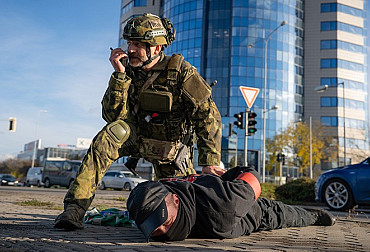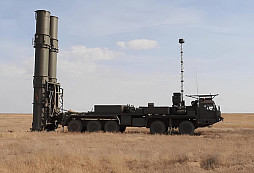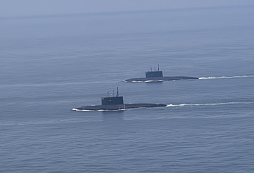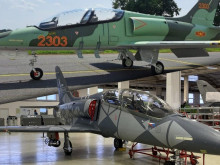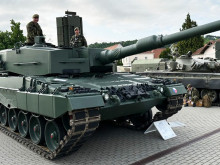Slovakia receives two MANTIS systems from Germany, but Slovak air defence needs much more
Slovak Defence Minister Jaroslav Naď recently announced on his Twitter account that Slovakia will receive two sets of MANTIS air defence systems worth 120 million euros from Germany free of charge and permanently. This is a significant reinforcement of the Slovak Army's air defence capabilities, as well as further allied assistance. On the other hand, the question of the Slovak Army's own air defence capabilities, which are insufficient, is again raised. In the context of the recent war conflicts in the Eurasian area, air defence is one of the key capabilities for the defence of the country.
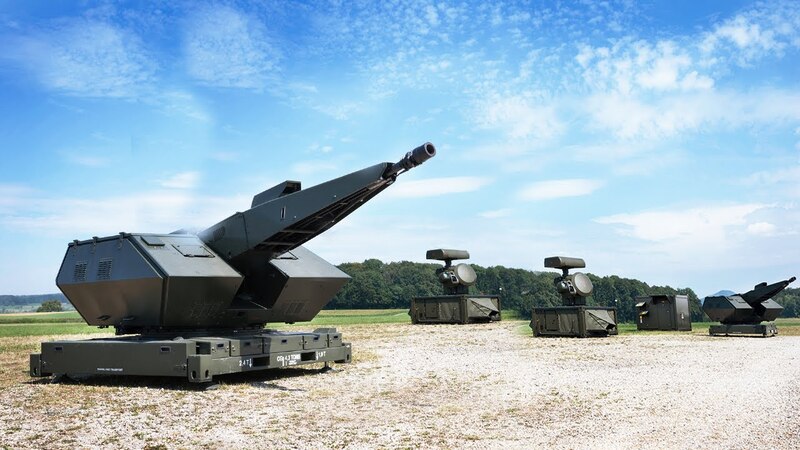 Picture: MANTIS air defence system | Rheinmetall
Picture: MANTIS air defence system | Rheinmetall
After the outbreak of the conflict in Ukraine, Slovakia very quickly became one of Ukraine's major supporters, including in terms of the supply of military equipment. According to data from October 2022, Slovakia has sent military aid to Ukraine worth around EUR 154 million, ranking fifth in terms of GDP. As part of the military aid, Ukraine has received the S-300PMU air defence system, Mi-17 and Mi-2 helicopters, Božena demining vehicles, BVP-1 vehicles and, as part of the sale, Zuzana 2 howitzers.
As far as air defence is concerned, following the dispatch of the S-300PMU system, which Slovakia received after the division of Czechoslovakia, the NATO allies transferred 4 batteries of the Patriot air defence system to Slovakia. Specifically, the Patriot systems were provided by Germany, the United States and the Netherlands. However, this assistance is temporary and the Patriots have not been transferred to the use of the Slovak Armed Forces (SAF). Last October, the Slovak Ministry of Defence informed that the Netherlands decided to withdraw the Patriot battery from Slovakia due to a change in the dynamics of the situation, but the possibility of redeploying the battery in Slovakia remained open. Earlier this year, the United States also decided to withdraw the battery due to the need to maintain the air defence system. This left only two German Patriot batteries in Slovakia.
Now Germany has provided Slovakia with further significant assistance in the form of two sets of MANTIS (Modular Automatic and Network capable Targeting and Interception System) close-range air defence systems worth EUR 120 million, which Slovakia will receive free of charge for permanent use. One MANTIS system consists of two radar stations, a command post and six turrets. The turrets are armed with a 35 millimetre cannon with a cadence of 1 000 rounds per minute, and the system is also capable of firing airburst munitions. The system is fully automated and can detect and lock on to targets up to three kilometres away and then fire within five seconds.
MANTIS yes, but what next?
The MANTIS systems will clearly strengthen the Slovak Army's air defence capabilities. On the other hand, it must be taken into account that this is only one layer of the air defence system, which is not enough for Slovakia on its own. The situation with the air defence of the Slovak Republic is complex and has not changed significantly since the division of Czechoslovakia. The Slovak Army is still armed with 2K12 Kub systems of Soviet origin. The replacement of medium-range air defence systems, i.e. 2K12 Kub systems, is also envisaged in the Ministry of Defence's Long-Term Development Plan with a view to 2035. The MoD's ambition is to launch the project by the end of 2024. The replacement of long-range air defence systems is also envisaged by 2035. Due to the difficult political situation, this objective will be addressed by the new leadership of the Ministry of Defence, as early parliamentary elections are due to take place in September this year.
After the elections, whether the current head of the ministry, Jaroslav Naď, or anyone else will be the defence minister, the new defence minister must clearly set priorities in the field of armaments and work on the modernisation of military equipment. It is more than clear that the long-standing passive approach towards the modernisation of the Slovak Army, including the air defence systems, cannot be corrected in a few months. On the other hand, the conflicts of recent years in the Eurasian area or in the Middle East show how important air defence is for the protection of national territory. Drones, in particular, represent one of the key air threats today, and therefore we need to prepare adequately for them. This is also what is being said by experts in Slovak circles, who are calling for priority to be given to building air defence over certain other projects.
But how to obtain new air defence for Slovakia? Slovakia has expressed interest, together with other NATO member states and Finland, in the European Sky Shield Initiative project. The main idea of this joint initiative is to strengthen short, medium and long-range air defence capabilities within the European area. The project is led by Germany, which has also outlined the possible composition of the future air defence of the European continent. According to Germany, the joint air defence could consist of Arrow 3, Patriot and IRIS-T systems. This is an ambitious project and its concrete form will require thorough preparation and negotiations between allies and contractors.
Another possibility is the joint purchase of one specific system within a broader coalition of states. It was recently reported on the Breaking Defense website that Belgium, Bulgaria, Hungary, Poland and Romania have expressed interest in SPYDER air defence systems from the Israeli company Rafael. Breaking Defense also reports that the aforementioned countries are already in negotiations at various levels to acquire the system. The Czech Republic has also decided to buy the same systems. Although no contract has yet been signed with any of the countries mentioned, the purchase of one common type of air defence system within a "broader coalition" of countries could also be an interesting solution for Slovakia. However, there is still the possibility to proceed with the purchase of air defence systems separately. Whichever way the purchase of new air defence systems is implemented, it will be important for the Ministry of Defence to focus in detail on the modernisation of the Slovak Army's existing air defence capabilities.
















